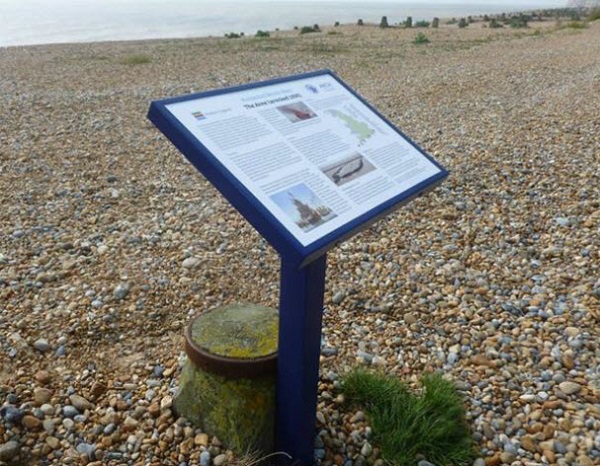The Wreck of the Anne
The wreck of the English 70-gun warship Anne lies on the beach just beyond the eastern end of the shoreline houses of Pett Level in the U.K. When the tides are extremely low and the sands have moved you can visit the wreck whose bottom is buried about four meters deep in the sand.
Anne was run ashore in July 1690 after being seriously damaged by the French navy in the Battle of Beachy Head. She was ordered to be burnt by her Captain John Tyrrell to stop her being taken as a French prize. During that battle several Dutch ships were lost, but Anne was the only English fleet casualty.
King Charles II had Anne built at Chatham by Phineas Pett II, and she was launched in 1678. She was one of the 30 ships program supervised by Samuel Pepys, and she was visited by King James II in 1687 before she carried a German princess to Lisbon to be the bride of King Pedro II of Portugal. It is believed that she was named after James II’s daughter Anne who later became Queen. 2,300 trees were used to build her at a cost of £16,000.
Anne is owned by the Warship Anne Trust, a subsidiary of the Nautical Museums Trust that owns the Shipwreck Museum, and it is there that her story is told with photographs, and reconstruction paintings of the ship and artifacts from the wreck. Amongst them is part of an early iron grenade.
There are more than 37,000 sunken ships recorded in English territorial seas, but only 47 enjoy the protection of the law in England. Anne is one of these ships. On February 11, 2013 Anne was visible for the first time in 15 years, and survey work will be carried out this year by the Shipwreck Museum guided by English Heritage who provide the licenses for this work to take place.
The Beach

There is parking on the grass verge along the Pett Level Road at the base of the sea defence embankment, and at intervals there are steps up and over to the beach. Be careful as you walk around the huge expanse of the 5,000 years old prehistoric forest since the beach is muddy and slippery. Also, do not walk at the base of the nearby sandstone cliffs as rock falls can occur at any time.
If you decide to explore westwards on the beach under the cliffs, do make sure that the tides are right to enable you to return to safety. It is possible to walk all the way to Hastings “Old Town,” but it will take about four hours, and it must be carefully planned for low spring tides.

that matters most
Get the latest maritime news delivered to your inbox daily.
Anne is protected by Section 1 of the Protection of Wrecks Act 1973 to prevent uncontrolled interference. This means that one cannot tamper, damage, remove or dive for salvage. Even fishing boats are prohibited from anchoring over her or using fishing gear.
Source: Wikipedia; Photo’s: Wreck Museum Hasting
The opinions expressed herein are the author's and not necessarily those of The Maritime Executive.
